Small Group Experiential Travel
Tour Code
XAP When To Go
May, Sep Start
Rome (FCO) End
Bari (BRI) Countries Visited (1)
Italy Overnight In (7)
Rome, Bari, Al...More > Activity Level
3 - Active? Tour Type
Active? - Overview
- Info & Inclusions
- Itinerary
- Map & Hotels
- Photos
- Dates & Prices
Highlights
- Max Group Size 16
- Explore Abruzzo and Puglia
- Discover ancient traditions
- Experience stunning landscapes
- Enjoy delectable cuisine
- Hike through picturesque villages
- Explore Rome's hidden corners.
- Singles friendly (view options for single travellers)
Description
Embark on an unforgettable 15-day journey through the heart of Italy, exploring the lesser-known gems of Abruzzo and Puglia (with a stop in Basilicata). Discover the ancient traditions, stunning landscapes, and delectable cuisine of these regions. Our carefully curated itinerary takes you from the majestic Apennine Mountains to the sun-kissed Adriatic and Ionian coasts. Hike through picturesque villages, explore historic towns, and indulge in authentic local flavours. Our Tour Leader and local guides will unveil hidden treasures, sharing insights into the rich history and culture of these regions. And to cap off your adventure, we'll spend two days exploring the Eternal City of Rome, delving into its lesser-known corners away from the crowds.
Price Includes
- Full-time Tour Leader services with local guide support at several locations.
- Breakfast daily, most dinners, some lunches (as per tour itinerary).
- All sightseeing and entrance fees for sites noted as 'visited' in the detailed itinerary. Gratuities for local guides, drivers, restaurant staff, porters.
- Airport transfers for land & air customers and for early arriving/late departing land & air customers who book their extra hotel nights through us.
Exclusions
- International airfare to/from the tour.
- Most lunches, some dinners (see full itinerary)
- Tour Leader gratuities, drinks, personal items (phone, laundry, etc), insurance, international air taxes (if applicable), and any excursions referenced as 'optional'.
- Airport transfers for Land Only customers.
Trip Info
- Seasonality and Weather:
Spring in Abruzzo and Puglia offers a delightful blend of mild temperatures and blooming landscapes. The Apennine Mountains of Abruzzo are particularly stunning during this time, with vibrant wildflowers carpeting the hillsides. In Puglia, the coastal towns and villages come alive with warmer weather, making it ideal for exploring ancient trulli, historic towns, and dramatic coastlines.
Early fall is a magical time to visit Abruzzo and Puglia. As the summer crowds dissipate, the regions offer a serene and picturesque experience. Abruzzo's mountains are ablaze with autumn foliage, creating breathtaking vistas. In Puglia, the harvest season is in full swing, providing opportunities to taste fresh local produce and experience traditional customs. Whether you're interested in hiking, exploring historical sites, or simply relaxing with a glass of wine, early fall is an excellent time to visit both regions. - Transport and Travel Conditions:
Most transport is by private air-conditioned vehicle, the size depending on ultimate group size (see 'group size'). Due to the winding roads and lack of accessibility on narrow streets in small towns and villages, we will avoid the large motor-coaches more typical of large group touring. One of the delights of exploring these places is the lack of long road journeys (our longest is 4.5 hours), allowing us to maximize our time doing, seeing, smelling, tasting, experiencing, and soaking it all in.
Our difficulty rating "Level 3" refers to our walks/hikes that go beyond town/city walking tours on pavement or cobblestones, to hiking on "natural" surfaces (ie gravel) and pathways that feature some modest elevation gain/loss. Such hikes are leisurely with plenty of stops along the way. This activity does not occur every day, but as per our tour itinerary, even when not on a "hike," we will be on foot quite a lot, with town walking tours, winery visits etc, with plenty of places with uneven surfaces and stairs. If you've been on one of our "X" tours before, this one can be considered a bit easier, with fewer walks overall and shorter durations.
OUR HIKES
Because some hikes can/may be adjusted at the discretion of your Tour Leader depending on things like weather and group interest, the final distances/durations of our hikes as indicated in our itinerary should be taken as guidance only. In the meantime, however, we can advise that, generally-speaking, our walks are leisurely on well-trodden pathways over undulating terrain, 2-3 hours in overall duration with plenty of breaks for rest and refreshment. Please note that some surfaces feature loose material (ie stones, gravel, sand etc) which can be slippery. Participants should be fit and active and accustomed to trail walking and be prepared to engage in a conditioning regimen prior to the trip.
For a daily summary of our hiking activities, please refer to the tour itinerary (the word "hike" or "hiking" will appear on the header for days on which we include a walk/hike).
In-keeping with our "experiential" theme, this program also has a strong gastronomic element, well-suited to "foodies," expert or novice, and those who enjoy savouring and lingering over a meal and sampling new things. While vegetarians/vegans are well catered for, we regret that very specific or extremely limited dietary restrictions/preferences could present a challenge on this trip.
Am I suitable for this tour? Please refer to our self-assessment form - Activity Level: 3
These tours are considerably more strenuous than our Level 1 & 2 "cultural" tours and feature walks/hikes on undulating and uneven pathways for 3-7 hours at a leisurely pace. We don't hike every day, but participants should be fit and active and accustomed to trail walking, possibly in remote locations, and be prepared to engage in a conditioning regimen prior to the trip. Altitude may also be a factor on some tours, though none of our hiking tours currently occur above 3000m/10,000 ft. These are hotel-based tours with no camping, and you are required to only carry what you need for the day.
To learn more about the Activity levels, please visit our tour styles page. - Accommodation:
Our hotels are well-located, modern 3-4 star properties. Porter service is usually available (see 'inclusions') though you should be independent with your luggage. As is the norm in Europe, single rooms are limited in number and likely smaller than twins.
For more information, click on the "Map & Hotels" tab. - Staff and Support:
Tour Leader throughout & local guides for town/city touring and for our hikes on which local knowledge and insight are of value and appropriate. - Group Size:
Maximum 16 (plus Tour Leader)
View / Print Itinerary
- Day 1:Arrival in RomeWelcome to Rome, the "Eternal City."
Our aim during our time in this incredible city, is to step off the beaten path and discover a side of Rome that few tourists ever see. Over the next two days, we’ll venture beyond the Colosseum and Trevi Fountain, exploring hidden gems and lesser-known neighbourhoods. From the vibrant atmosphere of Trastevere to panoramic views from Gianicolo Hill, we’ll immerse ourselves in the city's authentic charm.
If this is your first visit to Rome, you may consider adding an extra night or two and experiencing some of the iconic sites on your own. Our hotel will likely be located in the Central Station area of Rome; while it's not the most picturesque or historical part of the city, it's well-connected to other areas of Rome via public transport and easy to get to from Rome's international airport.
Hiking & Outdoor Activities: This tour includes several moderate hikes and walks ranging from 2-7 km (1.5-4.5 miles). While we provide typical distances and durations, please note that specific trails and routes are subject to change based on weather conditions, trail accessibility, and group ability. Our experienced local guides select the most suitable options to ensure the best and safest experience for all participants. Alternative activities (easier walks, cultural tours, or leisure time) are available for those opting out of more challenging hikes.
Overnight in Rome.
Included Meal(s): Dinner, if required - Day 2:Underground Rome & TrastevereThree layers of history await beneath the Basilica of San Clemente, where we begin our exploration of Rome's hidden depths. Descending through the centuries, we encounter a 12th-century basilica built atop a 4th-century church, which itself rests above Roman houses and a mysterious Mithraeum from the Imperial era. The air grows cooler as we go deeper, and the ancient stones seem to whisper secrets of early Christian worship and pagan ritual.
After our underground exploration, we head to Trastevere for a break for lunch. You have the freedom to meander through its charming cobblestone streets, discovering cozy cafes and bustling markets along the way. The district is a vibrant tapestry of local life, where every corner offers a new delight – from aromatic street food to the melodies of street performers.
In the afternoon, we visit the stunning Basilica di Santa Maria in Trastevere, one of Rome's oldest churches. This historic basilica, with its glittering golden mosaics dating to the 12th century, invites us to pause and reflect in its serene atmosphere. The apse mosaics, showing the coronation of the Virgin, are considered masterpieces of medieval Roman art. The church itself stands on a site where, according to legend, a fountain of oil miraculously sprang up on the day of Christ's birth.
From there, we make our way to Gianicolo Hill. As we ascend, the city unfolds below us, offering breathtaking panoramic views of Rome. The sight is a testament to the city's timeless beauty, with its domes and ancient structures bathed in the golden afternoon light. This vantage point, beloved by Romans themselves, provides a perfect perspective on how the ancient, medieval, Renaissance, and modern cities layer atop one another.
Our day concludes with dinner at a traditional trattoria, where we savour authentic Roman dishes crafted with recipes passed down through generations.
Overnight in Rome.
Included Meal(s): Breakfast and Dinner - Day 3:Ancient Baths & Local MarketsJust five minutes' walk from our hotel stands one of Rome's four papal basilicas - the Basilica di Santa Maria Maggiore. Arriving before the crowds allows us to fully appreciate this architectural and artistic marvel in relative tranquility. Founded in the 5th century, the basilica preserves one of Rome's most spectacular interiors, with glittering mosaics that have survived virtually intact for 1,500 years. The perfectly preserved nave mosaics depict scenes from the Old Testament, while the triumphal arch showcases the infancy of Christ in brilliant gold and vibrant colours. The coffered ceiling, legend says, was gilded with the first gold brought from the Americas. Standing beneath these ancient mosaics, we witness exactly what pilgrims saw centuries ago - a rare gift in a city where so much has been rebuilt and restored.
From sacred splendour, we journey to the colossal ruins of the Baths of Caracalla. Built in 216 CE, these weren't merely baths but a vast social complex where 1,600 Romans could bathe, exercise, and socialize simultaneously. As we wander through halls that once echoed with conversation and splashing water, it's easy to imagine toga-clad citizens conducting business deals in the caldarium or gossiping in the frigidarium. The intricate mosaics underfoot and fragments of marble columns hint at the opulence that once defined this space.
After breaking for lunch, we transition to the vibrant bustle of a local Roman market. The stalls overflow with seasonal produce, pungent pecorino cheese, glossy olives, and paper-thin prosciutto. Friendly vendors call out their offers, and the air fills with the mingled aromas of fresh herbs, roasting porchetta, and espresso from nearby bars. We taste samples of regional specialties, experiencing Rome as Romans do through their daily rituals of shopping and eating.
Our afternoon concludes with time in Monti, Rome's oldest neighbourhood and now a haven for artists and artisans. The medieval street plan remains intact, creating a labyrinth of narrow lanes where we can discover hidden courtyards, vintage boutiques, and galleries showcasing contemporary Roman artists.
Overnight in Rome.
Included Meal(s): Breakfast and Dinner - Day 4:Into the Apennines - Rome to L'AquilaThe Apennines rise before us as we leave Rome behind, their forested slopes and limestone peaks forming the geological spine of Italy. These mountains, younger cousins to the Alps, were thrust upward millions of years ago when the African tectonic plate collided with Europe. Our winding route takes us through valleys carved by ancient rivers, past hilltop villages that seem to grow organically from the rock itself, and alongside gorges where eagles soar on thermal currents.
L'Aquila - "The Eagle" - was founded in 1254 by Holy Roman Emperor Frederick II, who deliberately created the city by uniting 99 surrounding castles into a single fortified settlement. Legend says each castle contributed to building one of the city's 99 churches, 99 squares, and 99 fountains. This carefully planned city became one of medieval Italy's most important centres, its strategic mountain location controlling the routes between Rome and the Adriatic.
Our guided tour focuses on the Basilica di Santa Maria di Collemaggio, whose striking pink-and-white facade has become a symbol of resilience. Built in the 13th century, this architectural masterpiece suffered devastating damage in the 2009 earthquake that shook L'Aquila. The restoration that followed - completed with painstaking attention to original techniques - represents both a triumph of modern engineering and a testament to the community's determination to preserve their heritage. Inside, the soaring vaulted ceilings and delicate rose windows demonstrate why this basilica is considered one of central Italy's finest examples of Romanesque-Gothic fusion.
As evening settles over the mountains, we gather for dinner featuring Abruzzo's hearty mountain cuisine - dishes like arrosticini (grilled lamb skewers) and maccheroni alla chitarra that have sustained shepherds and farmers in these highlands for centuries.
NOTE: Your Tour Leader will remind you of tomorrow's planned hike and the need to acquire items for a picnic lunch.
Overnight in L'Aquila.
Included Meal(s): Breakfast and Dinner - Day 5:L'Aquila: Gran Sasso, The Stone GiantThe Gran Sasso massif dominates the horizon, its limestone ramparts rising to 2,912 metres - the highest peak in the Apennines. The name means "Great Stone," and this vast mountain plateau has served for centuries as both fortress and refuge. Wolves still roam these heights, while golden eagles nest on impossible cliff faces.
Our hike explores this dramatic landscape, with the exact route determined by weather and group ability. We may begin from medieval Santo Stefano di Sessanio or from Calascio, perched at 1,460 metres. Both routes lead toward Rocca Calascio, one of Italy's highest fortresses, its stone towers silhouetted against the sky.
As we climb, the landscape transforms. Alpine meadows give way to rocky terrain where hardy wildflowers cling to crevices. The air grows cooler, carrying the scent of wild thyme and juniper. Our guide shares stories of shepherds who drove vast flocks across these mountains on ancient transhumance routes, moving between summer and winter pastures in rhythms unchanged for millennia.
Rocca Calascio itself - built in the 10th century and featured in "The Name of the Rose" - commands breathtaking 360-degree views. From these ramparts, medieval lords could see for dozens of kilometres, controlling vital mountain passes below. We pause here for our picnic lunch, the entire Apennine chain spread before us.
The return journey may take us through Campo Imperatore, the vast high plateau nicknamed "Little Tibet" for its otherworldly landscape. At over 2,000 metres elevation, this former glacial plain stretches for 25 kilometres. Weather here can shift dramatically; sunshine may turn to mist, rain, or even snow within hours.
ACTIVITY SUMMARY: This is our most challenging hike, with routes ranging from 2.9 to 4.6 km (1.8 to 2.8 miles) and 1.5 to 3 hours duration. Terrain includes moderate to steep grades on uneven surfaces. Elevation gain approximately 200-300 metres. Those preferring a less strenuous day can visit Santo Stefano di Sessanio independently or enjoy leisure time in L'Aquila.
Overnight in L'Aquila.
Included Meal(s): Breakfast and Dinner - Day 6:Mountain Treasures - L'Aquila to SulmonaSulmona spreads across its valley like an amphitheatre, encircled by some of the Apennines' most dramatic peaks. This was the birthplace of Ovid, the great Roman poet who would later write of his exile from Rome with longing for these mountain vistas. The Romans valued Sulmona for its strategic position on the routes connecting Rome with the Adriatic, and the town's elegant baroque architecture reflects centuries of prosperity.
Our guided exploration begins at the Confetti Museum, where we discover why Sulmona became famous throughout Italy for its confetti - not the paper kind, but elaborate creations made from sugar-coated almonds. This tradition dates to the 15th century, when local confectioners began fashioning the candies into intricate flowers, bouquets, and even architectural miniatures. The craftsmanship is astonishing; what appears to be a delicate rose is entirely edible. We learn how five layers of sugar coating are applied to each almond over several days, a process that has changed little in 500 years.
At the Archaeological Museum, the region's deeper history unfolds before us. The Paeligni people inhabited these valleys long before Rome's legions arrived, and their distinctive warrior culture is preserved in bronze helmets, intricate jewelry, and stone inscriptions. Roman artifacts tell of the town's integration into the empire, while medieval treasures reveal the complex interplay of kingdoms that followed Rome's fall. Each artifact adds another thread to the rich tapestry of Abruzzo's past.
As evening approaches, we settle in for dinner featuring hearty Abruzzese specialties. This mountain cuisine reflects centuries of shepherding tradition - dishes like lamb brodetto, pecorino cheese, and pasta made with local wheat varieties sustained communities through harsh winters. At some point during our day, your Tour Leader will prompt you to acquire items for tomorrow's picnic lunch during our countryside hike.
Overnight in Sulmona.
Included Meal(s): Breakfast and Dinner - Day 7:Valleys & Vines - Sulmona Hiking & Wine TastingThe limestone massifs of the Majella and Gran Sasso frame the valleys around Sulmona, creating a patchwork of microclimates where ancient trails wind through beech forests, alongside mountain streams, and across meadows brilliant with wildflowers. Our local guides select this morning's route based on current conditions, perhaps leading us through the dramatic gorges of the Sagittario Valley, where the river has carved deep channels through rock, or into the foothills where shepherds' paths offer panoramic mountain vistas.
As we walk, the landscape reveals the forces that shaped it - folded layers of limestone recording ancient seas, glacial erratics left behind by Ice Age glaciers, and karst formations where water has dissolved the rock into caves and sinkholes. Our guide points out wild orchids, explains the territorial calls of circling buzzards, and shares stories of the wolves and bears that still inhabit these mountains' remoter reaches. The pace is relaxed, allowing time to simply absorb the peace of these highlands where human presence remains light and nature holds sway.
After returning to Sulmona to freshen up, we journey to a local winery where Abruzzo's viticultural heritage comes alive. The region's signature grape, Montepulciano d'Abruzzo, thrives in the dramatic temperature swings between hot summer days and cool mountain nights. These stress the vines in ways that concentrate flavours, producing wines of remarkable depth and character. We tour the vineyard terraces, learning how altitude, soil composition, and ancient cultivation techniques combine to create wines that have been prized since Roman times. The tasting that follows lets us sample several vintages, each expressing subtle variations in terroir - the unique combination of place, weather, and winemaking philosophy that makes each bottle distinctive.
ACTIVITY SUMMARY: Morning hike typically covers 5-7 km (3-4.5 miles) over 2-3 hours on generally moderate terrain with some uneven surfaces and occasional inclines. Exact route determined by guide based on weather and group ability. Those preferring a less active morning can explore Sulmona's historic centre, medieval aqueduct, and artisan workshops independently.
Overnight in Sulmona.
Included Meal(s): Breakfast and Dinner - Day 8:Coastal Horizons - Sulmona to VastoThe character of the landscape shifts as we descend from the Apennines toward the Adriatic coast. Limestone peaks gradually give way to rolling hills covered in olive groves and vineyards, and suddenly the glittering blue of the sea appears on the horizon. Vasto reveals itself as we approach - a town perched on a promontory, its medieval centre crowned by the imposing Caldoresco Castle, a fortress built by the powerful Caldora family in the 15th century when this coastline was contested between competing kingdoms.
Upon arrival, we head directly to the Punta Aderci Nature Reserve, where the Trabocchi Coast's wild beauty is preserved. This protected area encompasses dramatic coastal cliffs, hidden coves with crystalline water, and Mediterranean maquis habitat where rare orchids bloom in spring. Our guided walk follows the headland, offering constant views of the Adriatic stretching to the horizon. The reserve protects important bird migration corridors, and depending on the season, we might spot Mediterranean gulls, peregrine falcons, or even migrating raptors using the coast as a navigation landmark.
The trail reveals the geological drama of this coastline - layers of sedimentary rock tilted and folded by tectonic forces, then eroded by millennia of wind and waves into dramatic formations. In some places, the path skirts cliff edges where waves crash far below; in others, it descends to small beaches of golden sand. The landscape is quintessentially Mediterranean, with wild fennel, rosemary, and euphorbias filling the air with aromatic scents. This relatively easy coastal ramble offers spectacular views with minimal elevation change, a perfect introduction to the Adriatic's southern reaches.
This evening in Vasto, we savour the local cuisine that draws equally from mountain and sea - perhaps sampling brodetto, the region's traditional fish stew, or pasta dressed simply with local olive oil and peppers.
ACTIVITY SUMMARY: Coastal walk approximately 2.5 hours on mostly flat to mildly undulating terrain with some uneven surfaces. Total distance varies based on route but typically 4-5 km (2.5-3 miles).
Overnight in Vasto.
Included Meal(s): Breakfast and Dinner - Day 9:Abruzzese Traditions - Cooking Class & Trabocchi CoastFew better ways exist to understand a region than through its cuisine. This morning we master the art of Abruzzese pasta-making under a local chef's guidance. The "chitarra" (guitar) tool for cutting maccheroni evolved because mountain households needed durable pasta that could be made from local durum wheat and preserved for winter. We knead dough, roll it thin, and cut it into traditional shapes, discovering techniques passed through generations.
The sauces we prepare reflect Abruzzo's pastoral heritage - rich ragùs made from lamb or pork, simple presentations of foraged wild greens, and signature saffron-infused broths that speak to medieval trade routes. Each dish tells a story of adaptation to the mountain environment. For lunch, we feast on our own creations, savouring dishes made from scratch using time-honoured methods.
Our afternoon explores the Trabocchi Coast, named for remarkable wooden fishing platforms extending over the water on long stilts. These ingenious structures, unique to this Adriatic stretch, were developed by fishing families who lacked boats but needed to reach deep water. Each trabocco represents generations of maritime engineering knowledge - massive nets lowered and raised using complex rope, pulley, and winch systems, allowing fishermen to catch passing schools without leaving shore.
We visit several platforms, learning about their construction and the fishing techniques that sustained coastal communities for centuries. While many trabocchi now serve as restaurants, they remain powerful symbols of Abruzzese ingenuity. Our route also includes the Ortona Canadian Military Cemetery, where 1,375 Canadian soldiers rest - a poignant reminder of fierce fighting during World War II's Italian campaign. We also stop at the Abbey of San Giovanni in Venere, a Benedictine monastery commanding spectacular Adriatic views, its origins dating to the 6th century.
NOTE: Due to our substantial lunch, this evening's meal is on your own account.
Overnight in Vasto.
Included Meal(s): Breakfast and Lunch - Day 10:Crossing Regions - Vasto to MateraThe landscape transforms dramatically as we journey southeast from Abruzzo into Basilicata. The Apennines gradually soften into the rolling, sun-baked hills of southern Italy, where the character of the countryside shifts from alpine to Mediterranean. Olive groves replace beech forests, stone farmhouses (masserie) dot the hillsides, and the quality of light becomes more intense - that brilliant southern luminosity that has drawn painters for centuries.
Our route winds through small towns where time seems to move more slowly, past fields where shepherds still tend their flocks much as their ancestors did. The journey covers approximately 240 km (150 miles) and takes us through the heart of Basilicata's interior, a landscape of deep ravines (gravine) cutting through the plateau and flat-topped hills revealing layers of geological history. We pause at a rest stop roughly midway, a chance to stretch and perhaps sample a southern Italian coffee - stronger and more concentrated than its northern counterpart.
Matera emerges suddenly from the plateau edge, and the first glimpse never fails to astonish. The ancient city tumbles down a gorge, its Sassi districts - entire neighbourhoods of cave dwellings carved into the soft tufa rock - creating a townscape unlike anything else in Europe. Human habitation here dates back at least 9,000 years, making Matera one of the world's oldest continuously occupied settlements. For millennia, people lived in these caves, gradually carving deeper and more elaborate dwellings, until the entire gorge became a vertical city.
After time for lunch and depending on our arrival time, we may begin our Matera sightseeing with an informal orientation, or simply enjoy time to settle in before dinner. The Sassi were once synonymous with desperate poverty - thousands lived in the caves without running water or electricity until the 1950s. Yet this shameful chapter has given way to recognition of the Sassi as a UNESCO World Heritage site and a testament to human adaptability.
This evening we sample Basilicata's cuisine, which reflects the region's agricultural traditions - dishes featuring peperoni cruschi (crispy peppers), locally grown chickpeas, and bread made from ancient grain varieties.
Overnight in Matera.
Included Meal(s): Breakfast and Dinner - Day 11:Stone Chronicles - Matera's Hidden ChurchesMatera's rock-hewn churches reveal a hidden world of Byzantine spirituality and artistic achievement. Our morning takes us into one of these remarkable sanctuaries - perhaps Santa Maria de Idris, carved into the conical Monterrone rock, or San Pietro Caveoso, with its dramatic position overlooking the ravine. As we step inside, the cool darkness gives way to an astonishing revelation: the walls glow with frescoes, some dating to the 12th century, their colours still vivid despite centuries in these cave chambers.
These churches were created when Matera was part of the Byzantine Empire's Italian territories, and monks fleeing persecution brought their artistic traditions with them. Using natural rock walls as their canvas, they painted elaborate religious scenes - stern-faced saints, tender Madonnas, and powerful depictions of biblical events. The technique of fresco painting on rock required special adaptations, and the relatively stable temperature and humidity of the caves have helped preserve these artworks in ways that conventional buildings could not.
We then wander through the Sasso Caveoso district, one of the two main Sassi neighbourhoods. The steep, winding streets create a three-dimensional maze where homes are stacked vertically, with one family's roof forming another's front terrace. Carved cisterns collected precious rainwater, shared ovens baked communal bread, and extended families lived in adjacent caves connected by interior passages. The ingenious adaptation to this challenging environment speaks to centuries of refined knowledge about how to make these stones into homes.
The afternoon is yours to discover Matera at your own pace. You might explore the optional riverside trail that follows the Gravina ravine, where the cliff faces contain dozens more rock churches and hermit caves awaiting discovery. Others may prefer wandering the artisan workshops where craftspeople create ceramics, textiles, and papier-mache figures using traditional techniques. Or simply find a cafe carved into the stone and watch the light change across the Sassi as afternoon becomes evening - a timeless view that has captivated visitors for generations.
Overnight in Matera.
Included Meal(s): Breakfast and Dinner - Day 12:Fairy Tale Landscapes - Matera to AlberobelloThe Murge plateau unfolds as we journey deeper into Puglia, its limestone foundation creating a distinctive landscape of shallow valleys, stone walls, and ancient trulli scattered across the countryside. These conical structures appear first in isolation, then in clusters, until suddenly Alberobello reveals itself as an entire town of whitewashed, cone-roofed buildings. It's like stumbling into a fairy tale written in stone.
The trulli are ingenious adaptations to local conditions and historical circumstances. Built using dry-stone technique (no mortar), with limestone slabs stacked in ever-smaller circles until they form self-supporting conical roofs, they evolved partly from tax avoidance. In the 15th-17th centuries, buildings required taxation, but "temporary" structures did not. Resourceful Pugliese farmers built trulli with roofs that could theoretically be dismantled quickly when tax collectors approached, though these "temporary" homes have endured for centuries.
Our guided tour focuses on the Rione Monti and Rione Aia Piccola districts, where over 1,500 trulli cluster together, their mysterious symbols painted on roofs. Some symbols are Christian, others astronomical, still others possibly protective charms - their exact meanings lost to time. We visit the Trullo Sovrano, the only two-storey trullo in Alberobello, its unusual height a display of wealth by an 18th-century priest.
Our morning tour concludes by early afternoon, leaving time to visit a traditional masseria where we experience Puglia's "green gold" through an olive oil tasting. The family guides us through their groves, explaining cultivation techniques passed through generations, then demonstrates the transformation from olive to oil. We sample several oils, learning to recognize quality markers and understand why Puglian olive oil is prized worldwide. The earlier timing allows us to rest before dinner.
This evening we gather for dinner featuring Puglian classics.
Overnight in Alberobello.
Included Meal(s): Breakfast and Dinner - Day 13:Green Gold - Exploring the Itria ValleyThe Itria Valley spreads before us in a patchwork of ancient olive groves, vineyards, and dry-stone walls that have defined property boundaries for centuries. This fertile valley, cradled between gentle hills, has been Puglia's agricultural heartland since prehistoric times. Our exploration reveals both the landscape's natural beauty and the human traditions that have shaped it.
Our morning takes us into the countryside on foot, following paths that wind through olive groves where some trees are over 500 years old. These venerable olives, their trunks gnarled and massive, are living monuments to Puglia's history. Olive cultivation here dates to ancient Greece, when colonists recognized the valley's potential for producing exceptional oil. We may also walk sections of the Ciclovia dell'Acquedotto Pugliese, a recreational trail built atop the Puglia Aqueduct - itself an engineering marvel completed in 1939 that transformed the region by bringing water from distant mountains.
The walks vary based on weather and group interest, but all reveal the Itria Valley's particular character - its red soil, its distinctive trulli dotting the landscape, its stone "pajare" (small dome-shaped storage buildings), and its roadside cappelle (tiny shrines) marking crossroads and expressing centuries of devotion. We may pass through Locorotondo, famous for its whitewashed houses arranged in a perfect circle - a medieval town plan that remains intact today. The relatively flat terrain and well-maintained paths make for comfortable exploration, with frequent opportunities to pause and appreciate panoramic views.
After our morning in the countryside, we return to Alberobello with the afternoon free to relax, explore the town at your own pace, or perhaps revisit a favourite trullo-lined street.
ACTIVITY SUMMARY: Morning walks typically cover 4-6 km (2.5-4 miles) over 2-4 hours on generally flat to gently rolling terrain. Exact route varies based on weather, group interest, and guide recommendations. Some routes follow paved paths, others use unpaved trails through agricultural land. Those preferring a less active morning can explore Locorotondo's circular historic centre, visit local artisan workshops, or relax at the hotel.
Overnight in Alberobello.
Included Meal(s): Breakfast and Dinner - Day 14:Adriatic Finale - Alberobello to Bari via PolignanoThe coastal road north reveals why Puglia has been called the "heel of Italy's boot" - a long peninsula stretching into the Adriatic, its limestone cliffs battered by wind and waves for millennia. Our destination, Polignano a Mare, perches dramatically on these cliffs, its old town seeming to grow organically from white rock.
Polignano's history stretches back to Neolithic times, but Greek colonists first fortified this clifftop position around the 4th century BCE, recognizing its natural defences - sheer drops on three sides with sea below. Medieval and Renaissance rulers strengthened these fortifications, and the town became a crucial defensive point during centuries when this coastline faced raids from pirates and competing kingdoms. Walking through its narrow streets, we see palazzi built literally at the cliff's edge.
The town's most famous feature is its natural coves and grottoes, carved by wave action into limestone. At certain spots, we peer down through openings to see turquoise water swirling dozens of metres below. The waterfront offers spectacular views, with the Adriatic's intense blue contrasting against brilliant white stone. Time here allows for exploration, perhaps a caffe overlooking the sea.
Continuing north, we approach Bari, capital of Puglia and one of southern Italy's most important ports. The city's strategic position has made it a crossroads for over 3,000 years. After settling in, we venture into Bari Vecchia's labyrinthine alleys, where elderly women still make orecchiette pasta by hand in doorways. At the quarter's heart stands the Basilica di San Nicola, built in the 11th century to house the relics of Saint Nicholas - the original Santa Claus. The basilica became one of medieval Europe's most important pilgrimage sites.
Our farewell dinner celebrates the flavours and memories of our journey from Apennine peaks to the Adriatic shore.
Overnight in Bari.
Included Meal(s): Breakfast and Dinner - Day 15:DepartureDeparture from Bari - thank you for joining us!
Buon viaggio!
Included Meal(s): Breakfast
Regions Visited: Western Europe and The Adriatic
Countries Visited: Italy
Countries Visited: Italy
*The red tour trail on the map does not represent the actual travel path.
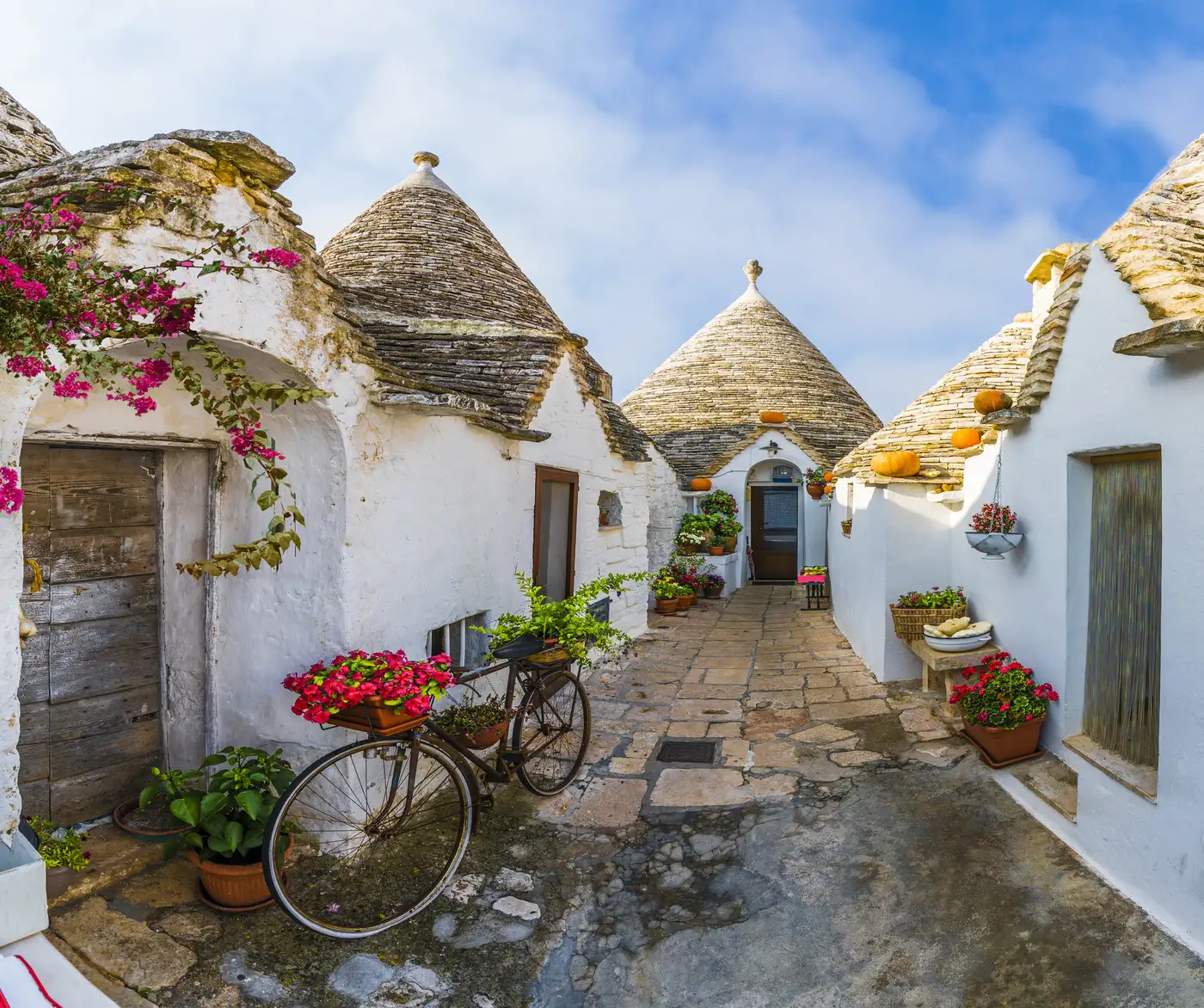
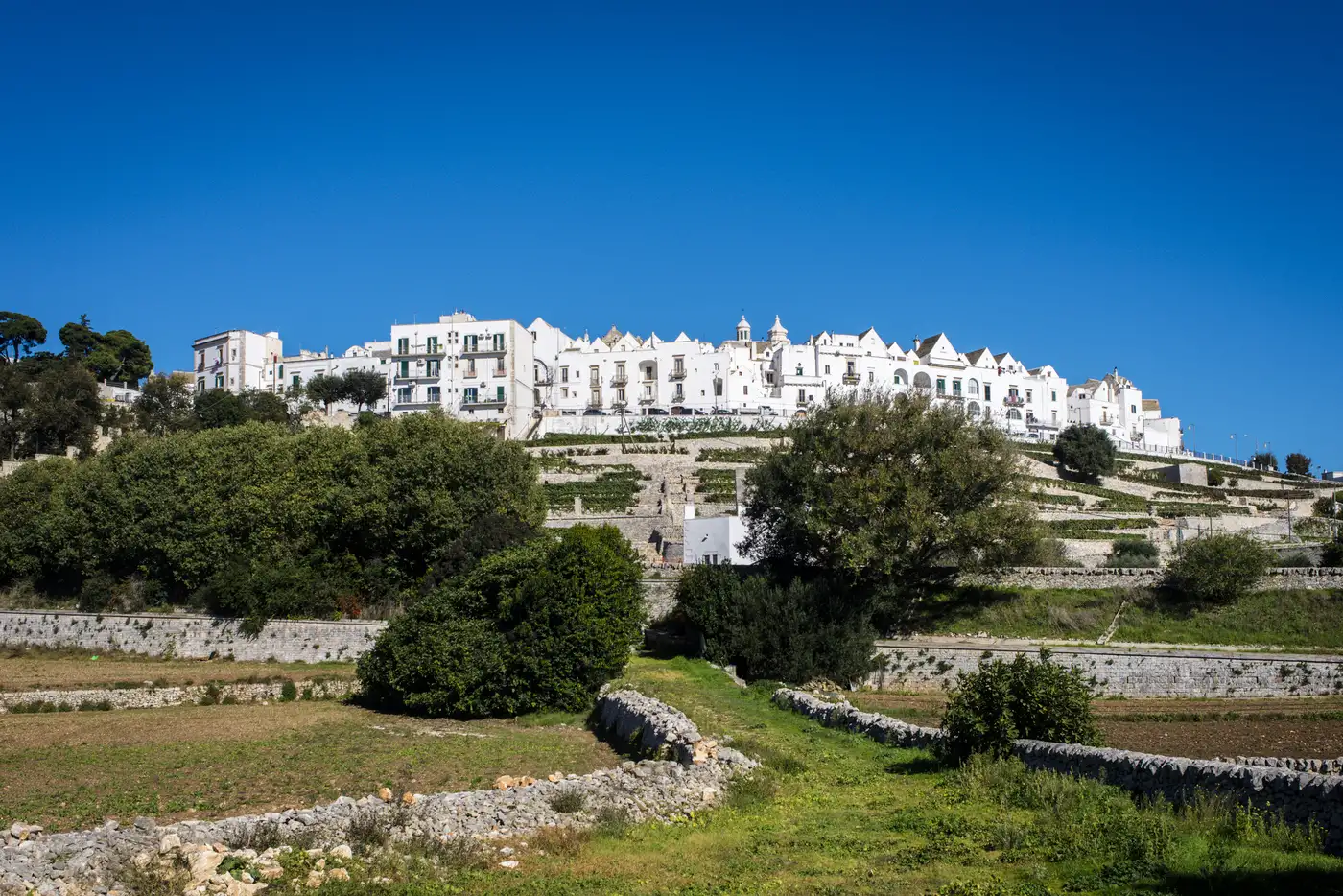
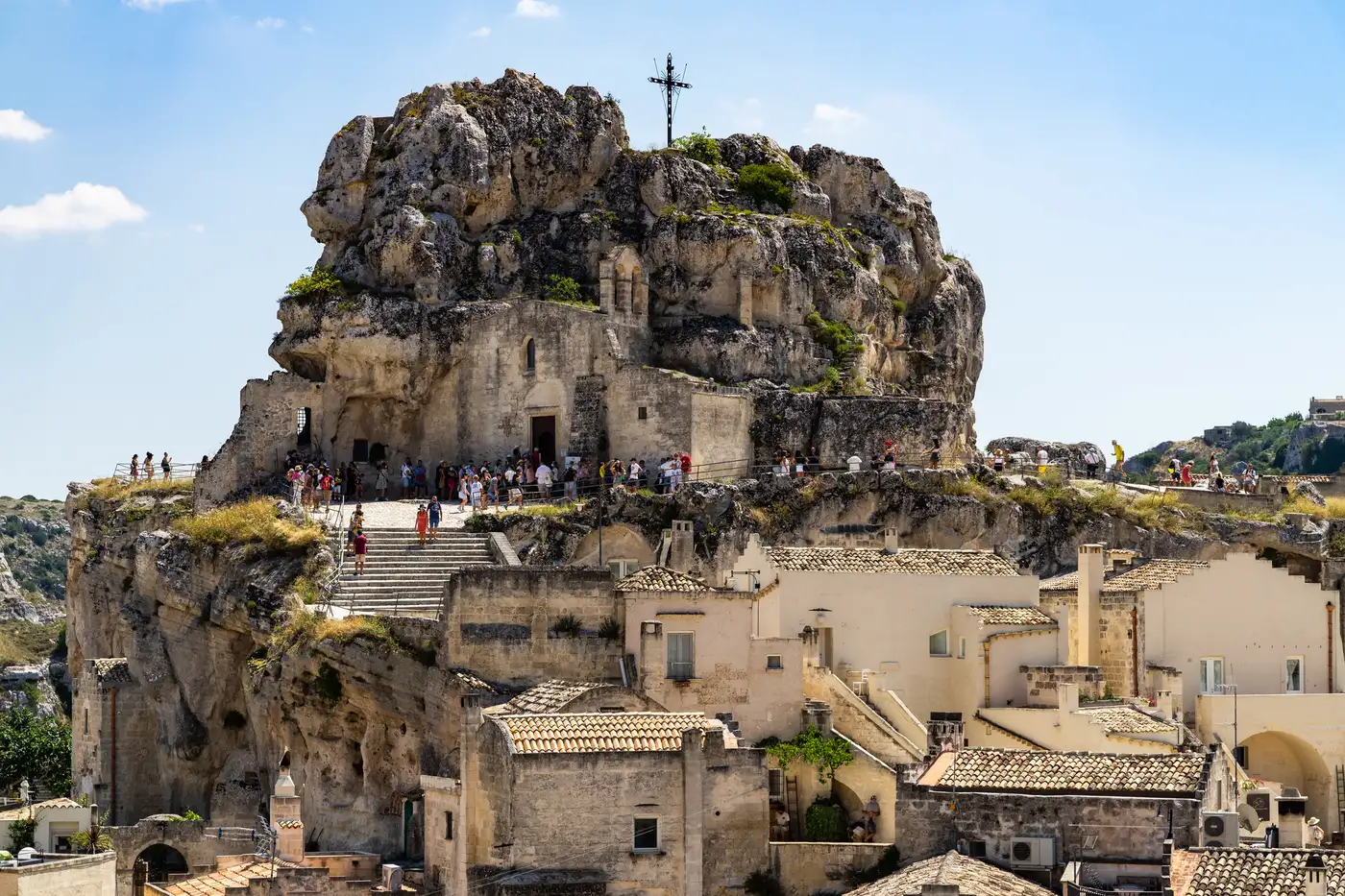
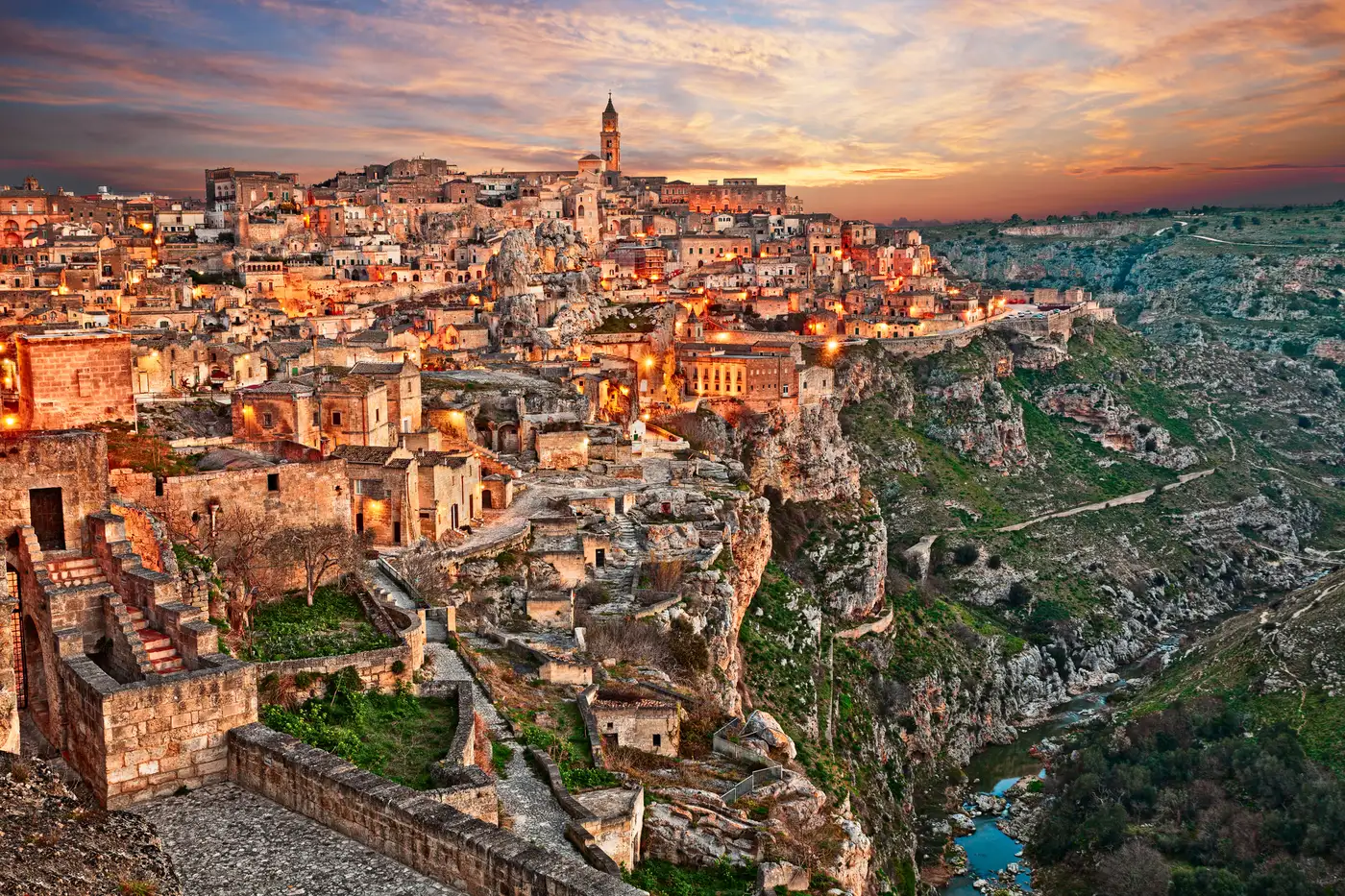
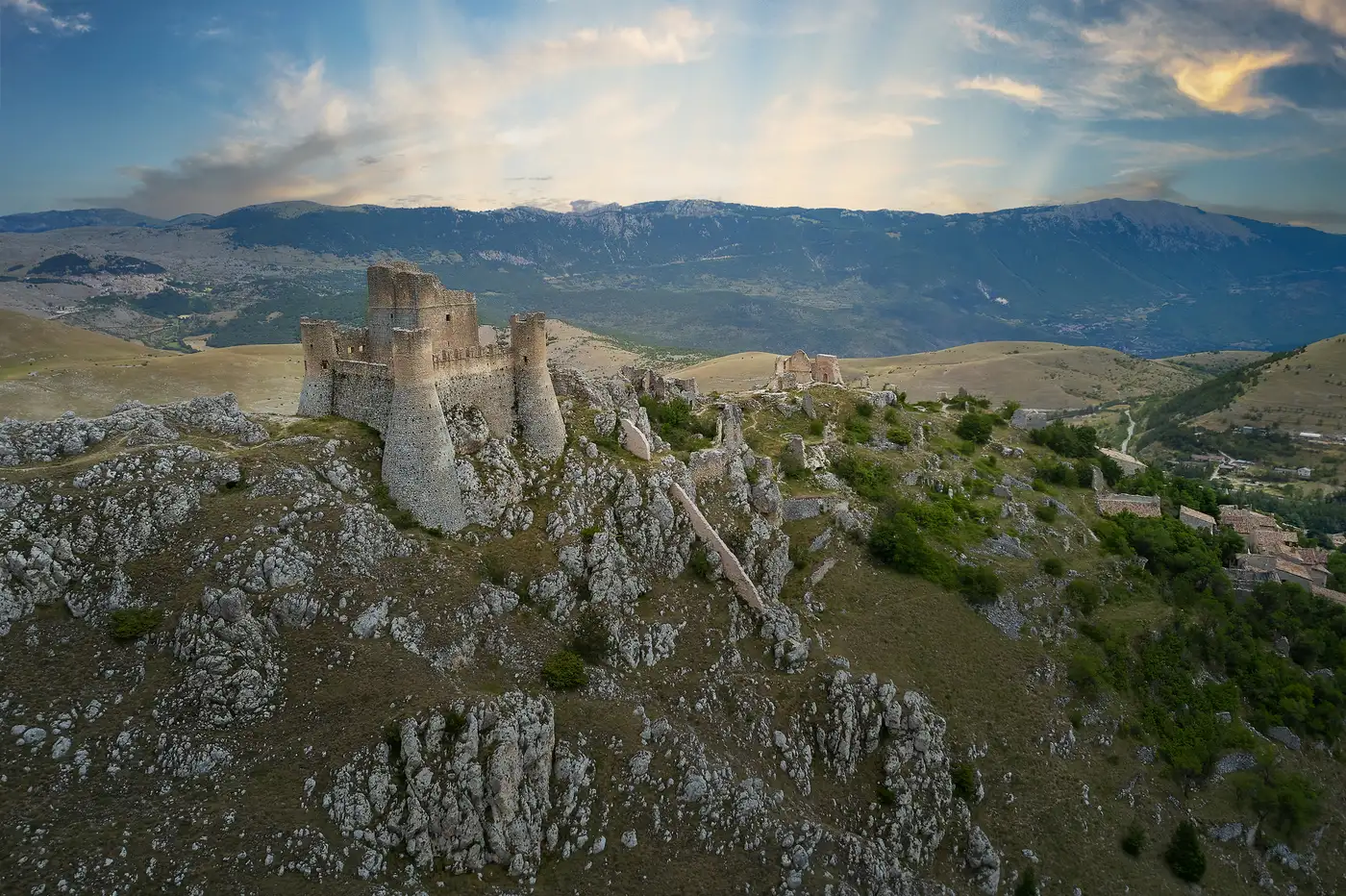
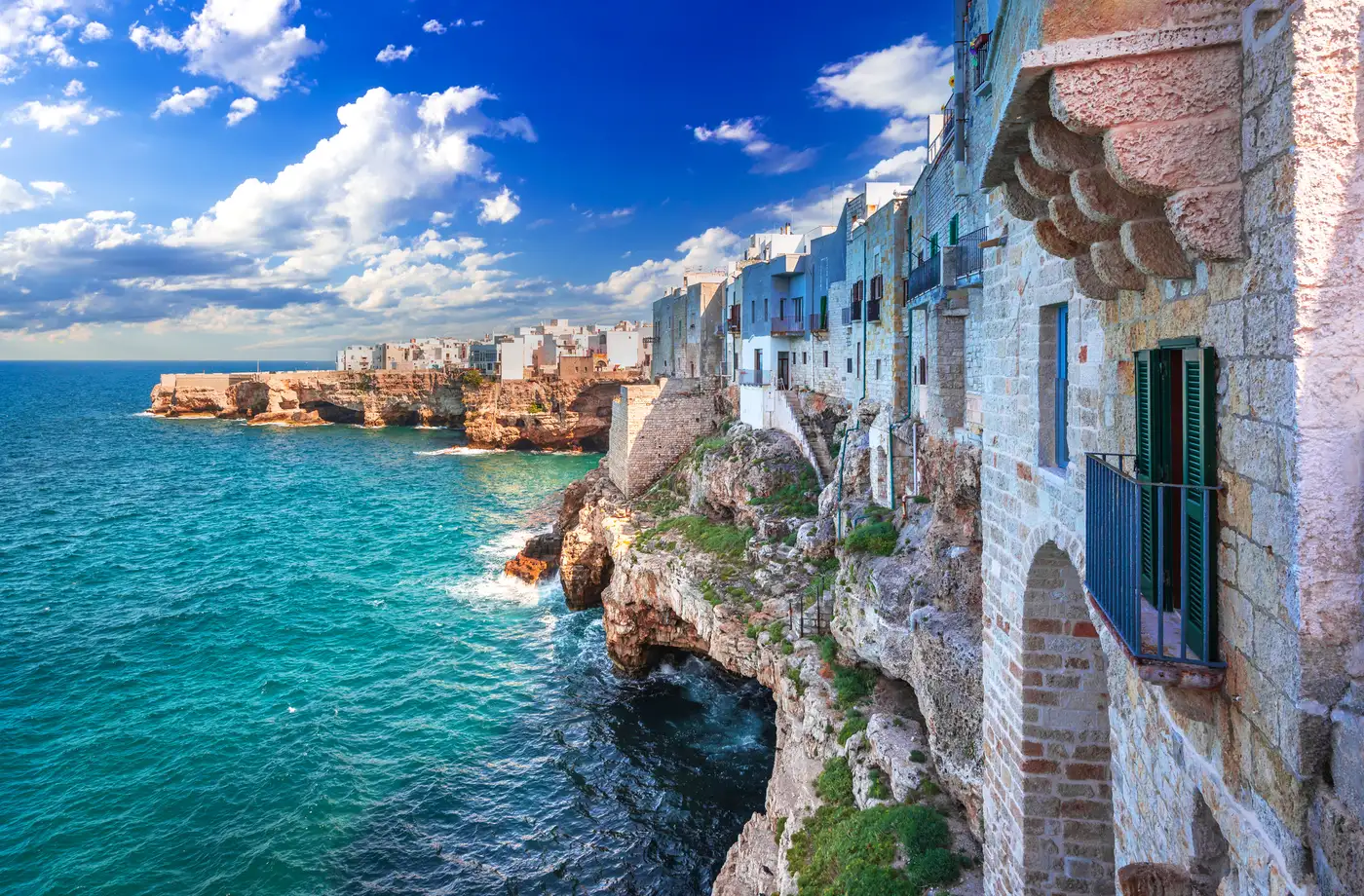
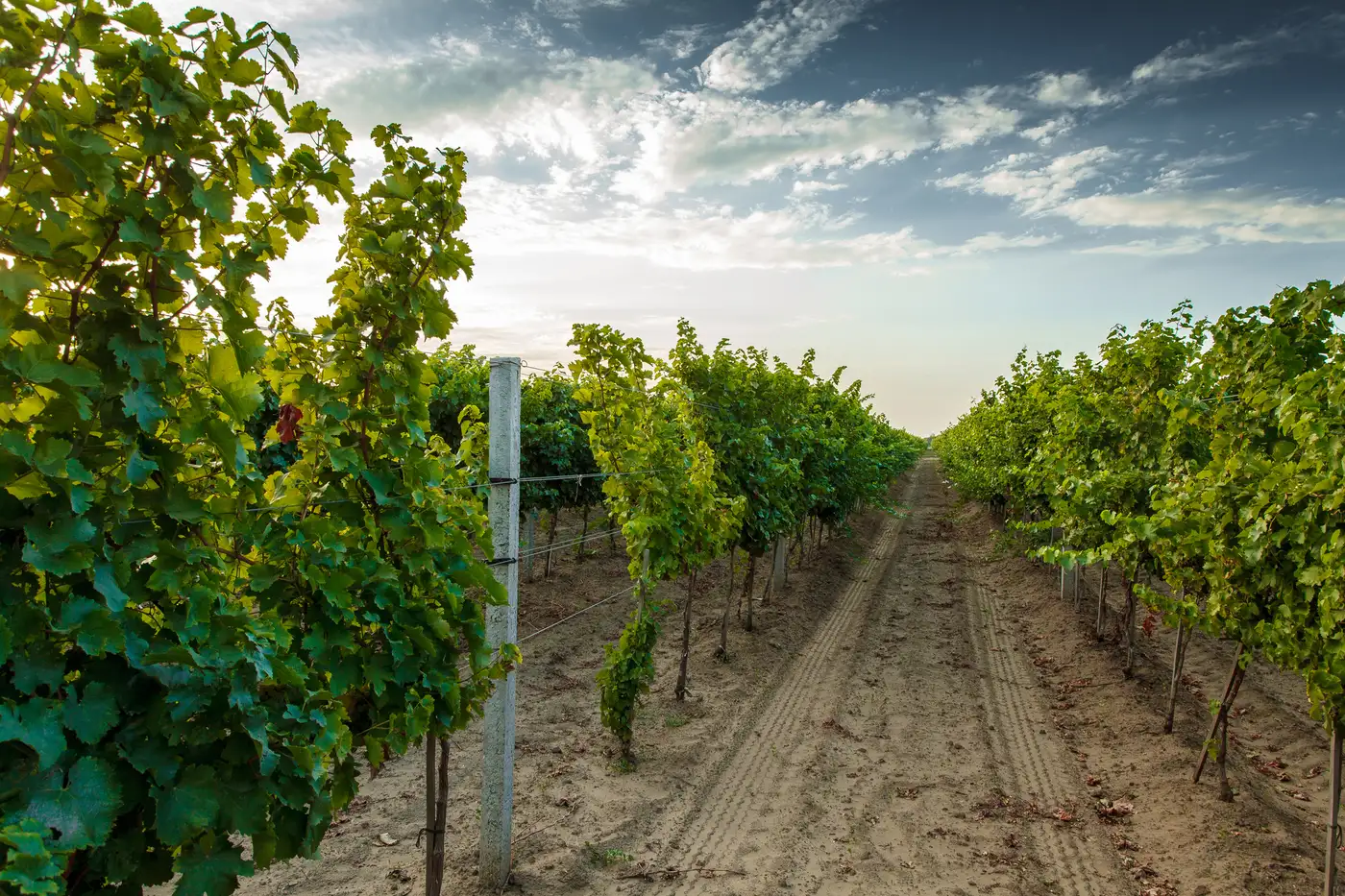
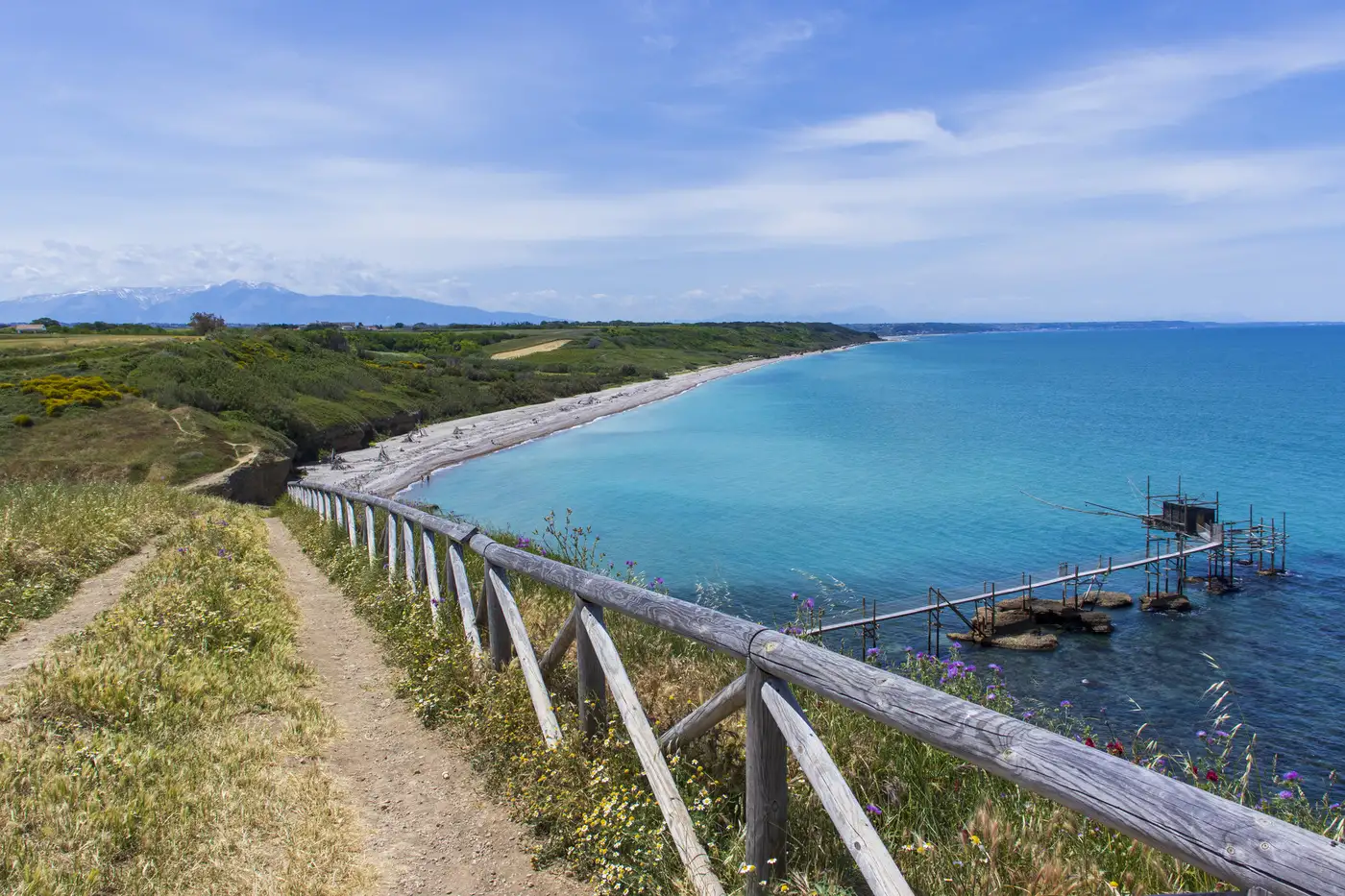
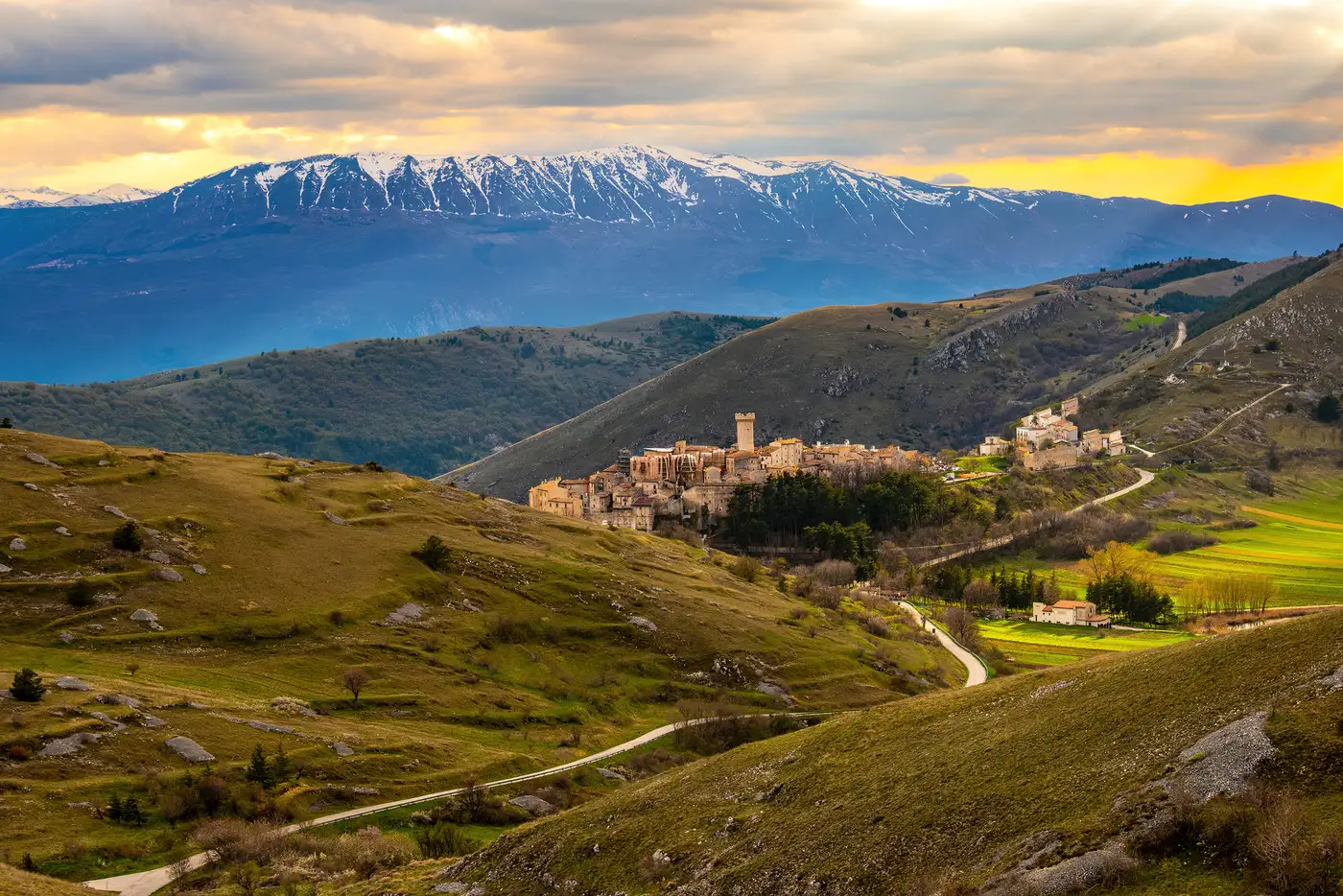
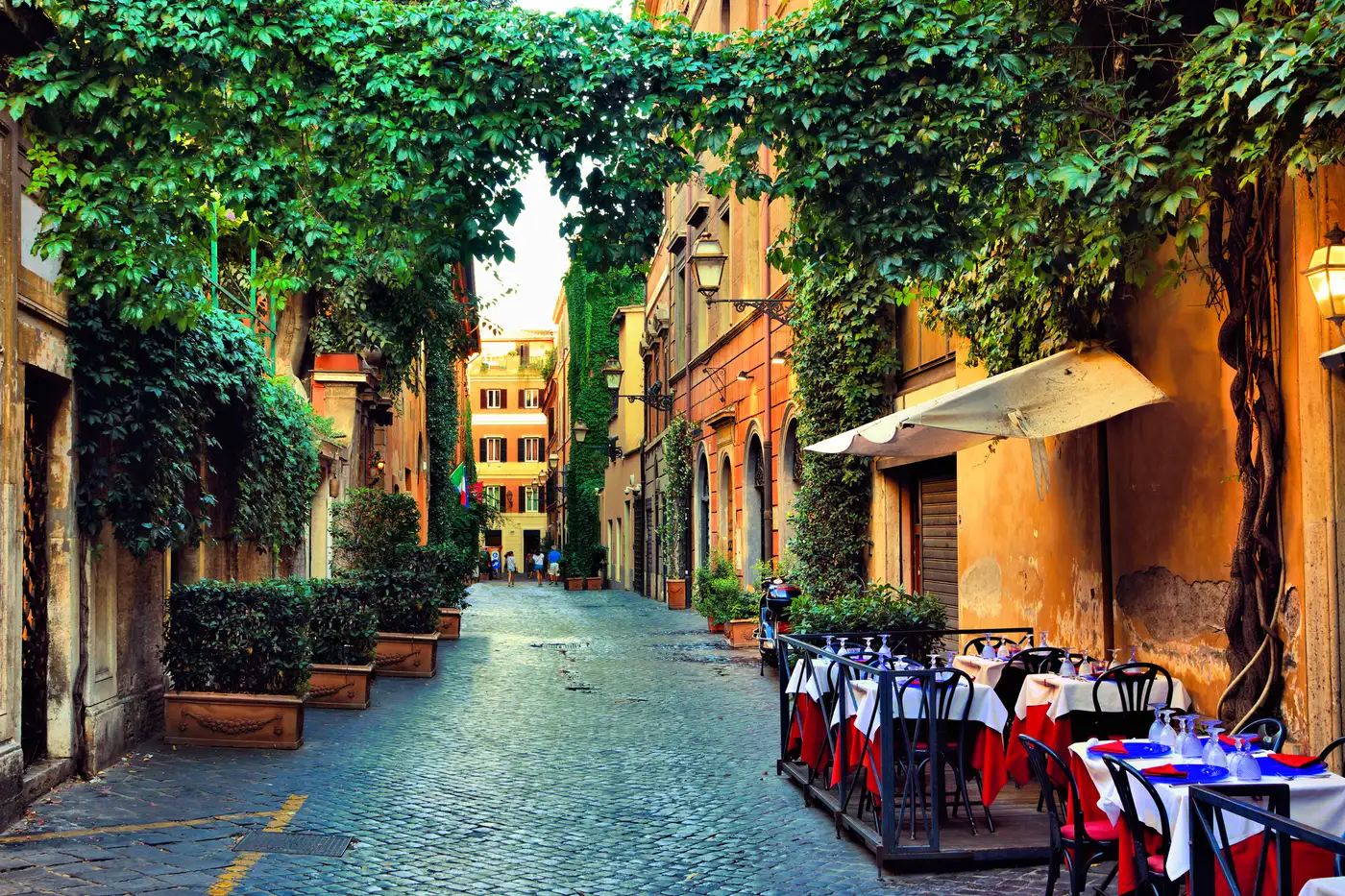
Excellent
Overall Rating
4.7
Extend Your Trip
This tour is part of a series that can be upgraded to make for a longer trip.
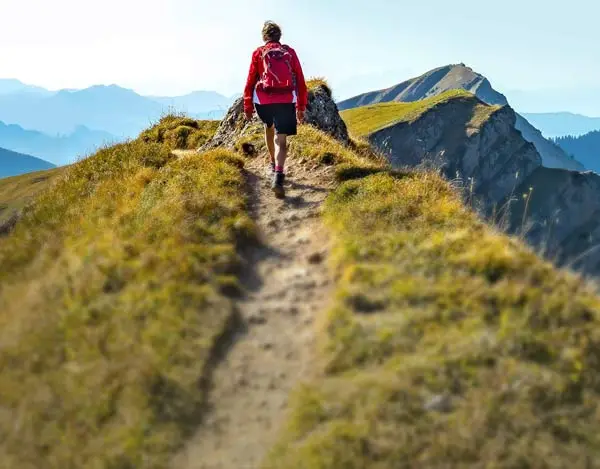
Fast and easy
Book This Tour
Book your unforgettable adventure today! For any questions or advice, don't hesitate to contact us.
Have questions?
1-800-665-3998
- Final payment: Due 90 days prior to departure.
- Deposit: A non-refundable $500 CAD Deposit is required at booking.
- Optional Single Supplement: $1480 CAD (number of singles limited).
(View options forsingle travellers) - Transfering Tour or Date: Transferring to another tour or tour date is only permissible outside of 120 days prior to departure and is subject to a $100 CAD change fee.
(Read our cancellation policy)
Choose your departure date:
Prices below are per person, twin-sharing costs in Canadian Dollars (CAD). Pricing does not include airfare to/from the tour and any applicable taxes.
Prices below are per person, twin-sharing costs in Canadian Dollars (CAD). Pricing does not include airfare to/from the tour and any applicable taxes.
Frequently Asked Questions
- What is the maximum number of participants on a trip?Most of our tours carry a maximum of 18 participants; some tours (ie hiking tours) top out at 16. In the event that we do not achieve our minimum complement by our 90-day deadline, we may offer group members the option of paying a "small-group surcharge" as an alternative to cancellation. If all group members agree, we will confirm the trip at existing numbers; this surcharge is refundable in the event that we ultimately achieve our regular minimum. If the small group surcharge is not accepted, we will offer a refund of your deposit or a different trip of your choice.
- Can I extend my tour either at the beginning or end? What about stopovers?Yes, you can extend your tour either at the beginning or the end and we can book accommodation in our tour hotel. Stopovers are often permitted, depending on air routing. Stopovers usually carry a "stopover" fee levied by the airline.
- How do I make a reservation? How and when do I pay?The easiest way to make a reservation is via our website; during office hours, you are also more than welcome to contact us by telephone.
A non-refundable deposit is payable at the time of booking; if a reservation is made within 90 days, full payment is required. Some trips require a larger deposit. If international airline bookings require a non-refundable payment in order to secure space or the lowest available fare, we will require an increase in deposit equal to the cost of the ticket(s).
Early enrolment is always encouraged as group size is limited and some trips require greater preparation time.
Once we have received your deposit, we will confirm your space and send you a confirmation package containing your trip itinerary, any visa/travel permit related documents, invoice, clothing and equipment recommendations, general information on your destination(s), and forms for you to complete, sign and return to us. Your air e-tickets (if applicable), final hotel list, final trip itinerary, and instructions on how to join your tour, will be sent approximately 2-3 weeks prior to departure. - What about cancellations, refunds, and transfers?Please review our cancellation policy page for details.
- I am a single who prefers my own room. What is a single supplement?All of our tours have a single supplement for those who want to be guaranteed their own room at each location.
This supplement is a reflection of the fact that most hotels around the world do not discount the regular twin-share rate for a room by 50% for only one person occupying a room. Most hotels will give a break on the price, but usually in the range of 25-30% of the twin-share rate. This difference, multiplied by each night, amounts to the single supplement.
The conventional amount can also vary from country to country and some destinations are more expensive than others for single occupancy. In order to be "single friendly," the supplements we apply are not a profit centre for us and we do our best to keep them as reasonable as possible.
On most tours we limit the number of singles available, not to be punitive, but rather because many hotels allow for only a limited number of singles; some smaller hotels at remote locations also have a limited number of single rooms available.
Please note that most single rooms around the world are smaller than twin-share rooms and will likely have only one bed. - Do you have a shared accommodation program?Yes! If you are single traveller and are willing to share, we will do our best to pair you with a same-gender roommate. Please note that should we fail to pair you, we will absorb the single supplement fee and you will default to a single room at no extra charge.
